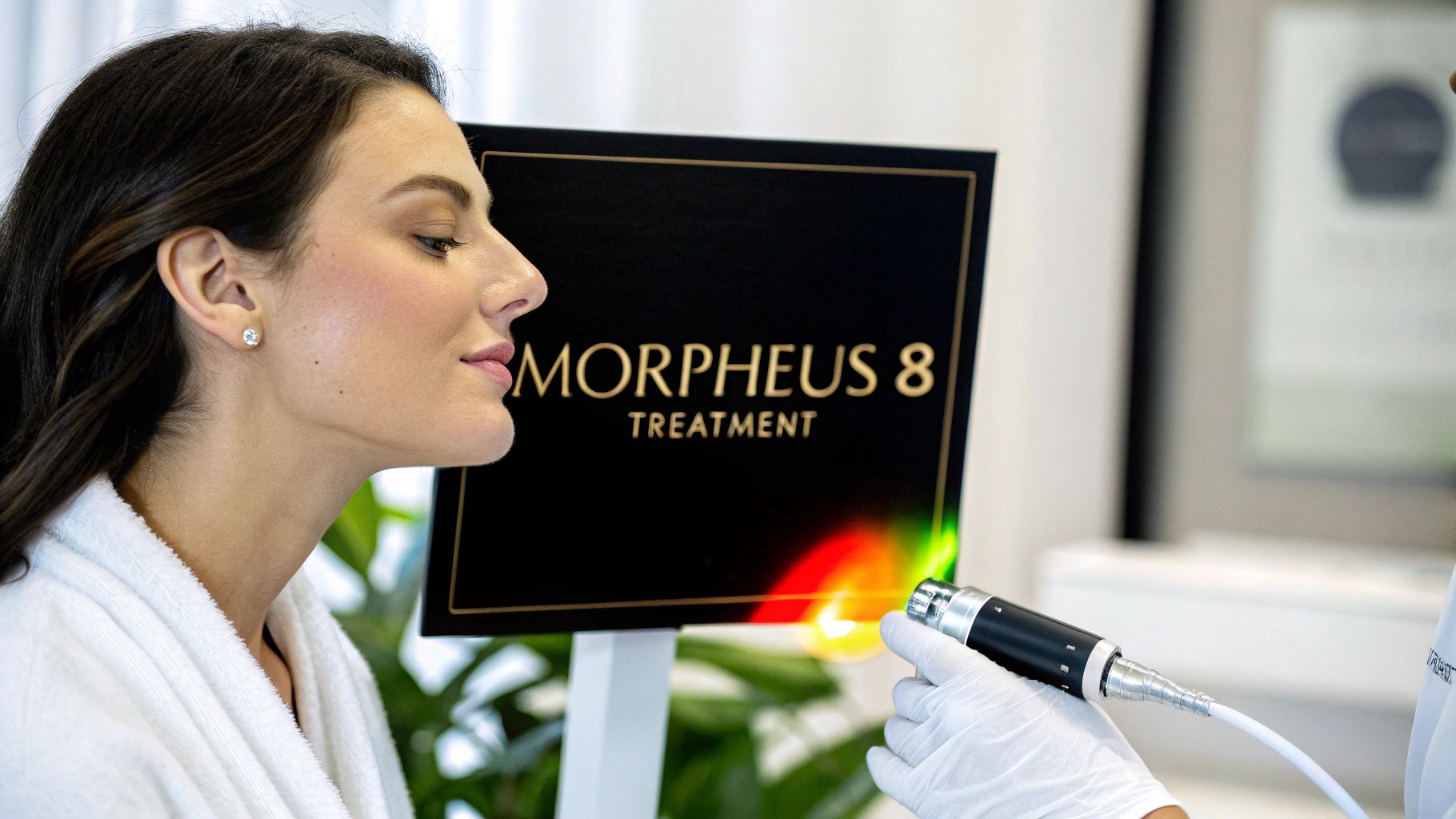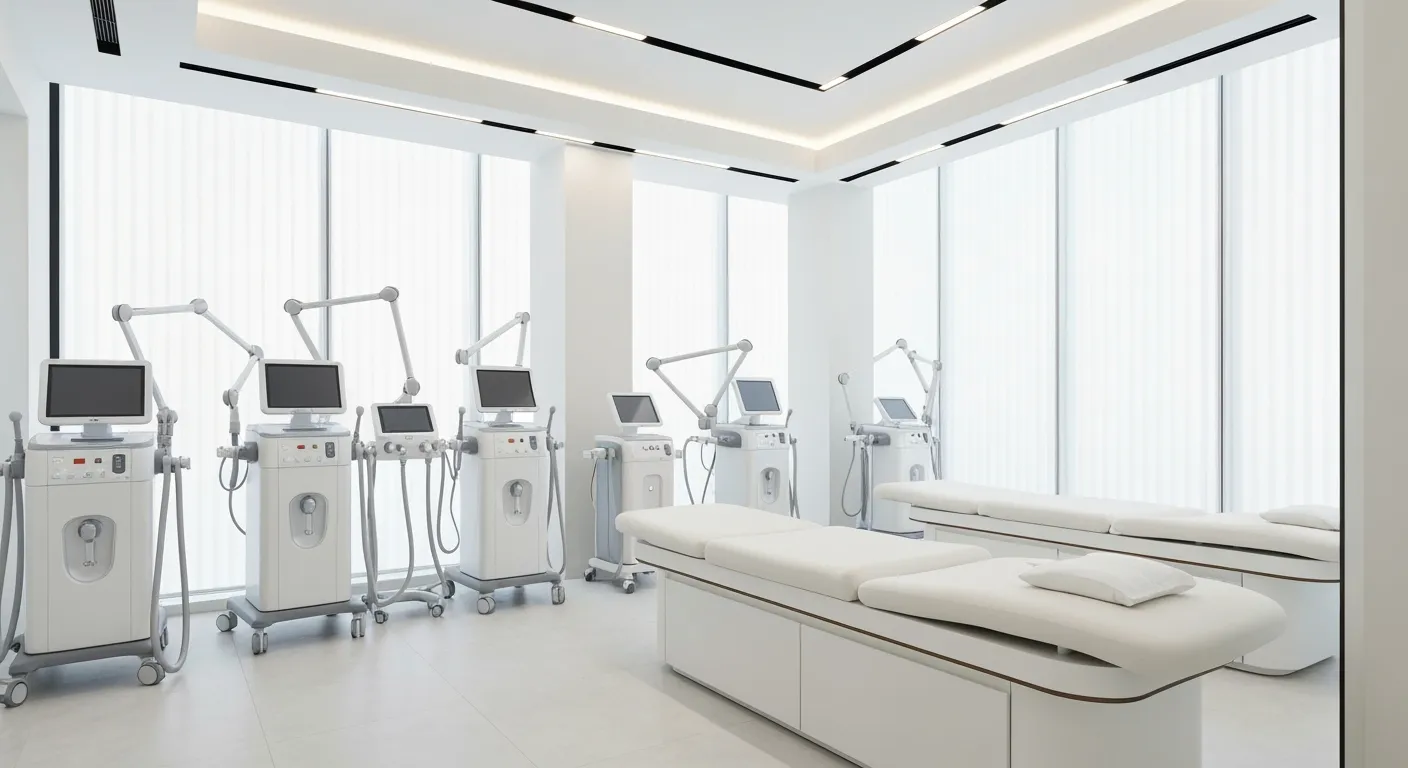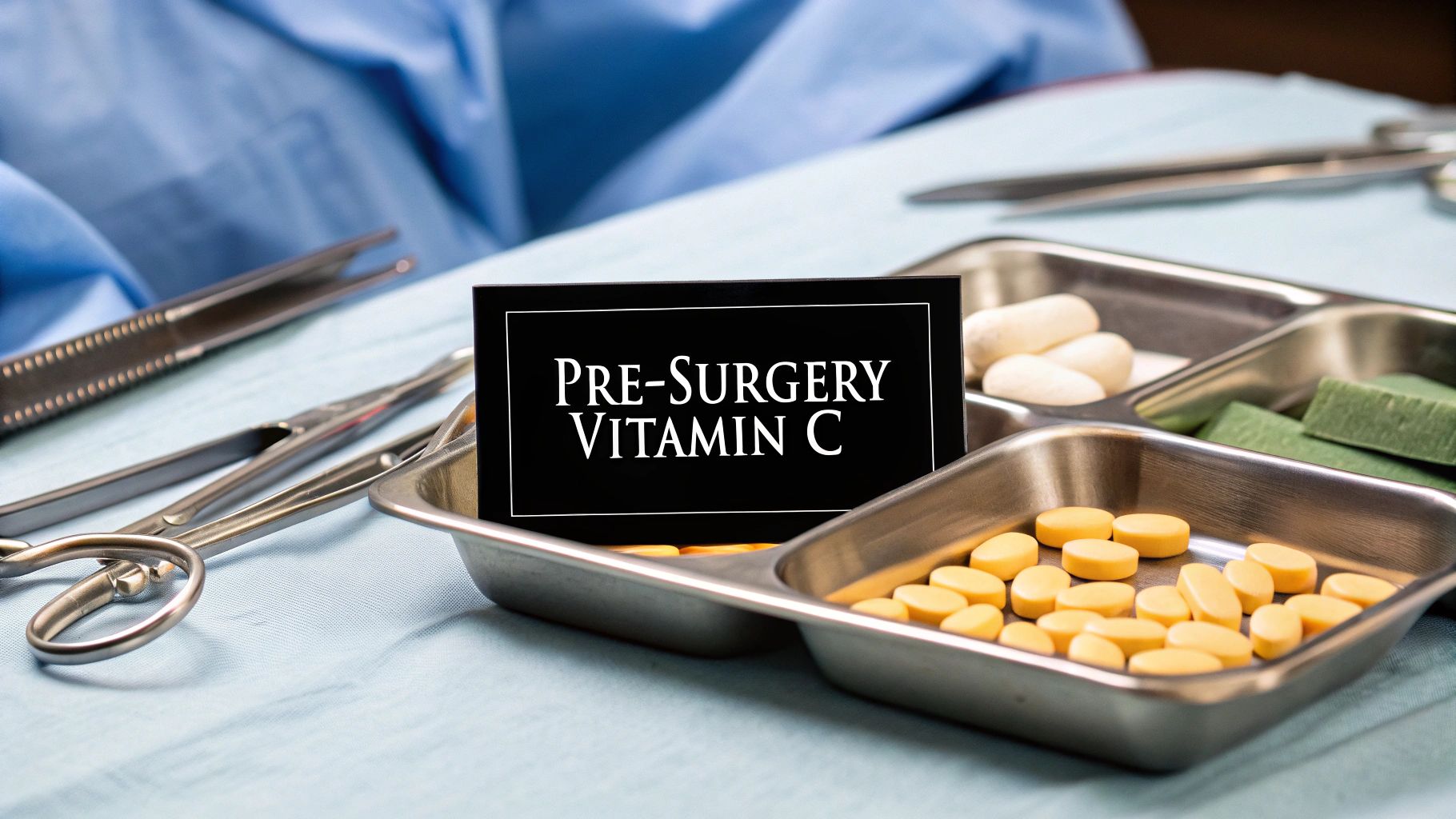
November 23, 2025
What Is Morpheus8 Treatment and How Does It Work
What is Morpheus8 treatment? Discover how this advanced RF microneedling solution revitalizes skin, its benefits, costs, and what to expect from the procedure.
Oct 9, 2025

Body contouring, also known as body sculpting, offers both surgical and non-surgical options to reshape and refine specific areas of the body, primarily by removing excess fat and tightening loose skin. This procedure is not a substitute for weight loss but complements it by targeting stubborn fat deposits and loose skin that resist traditional methods such as diet and exercise. This article explores the top treatments available, the benefits and risks involved, the process you can expect, and essential considerations for those interested in body contouring.

Top body contouring treatments include a variety of surgical and non-surgical procedures designed to reshape and refine the body's appearance.
Surgical Options:
Non-Surgical Methods:
Technologies Used:
Treatment Durations and Settings:
Suitability of Treatments Depending on Goals:

Body contouring procedures provide significant benefits of body contouring by transforming areas of the body through fat removal and skin tightening. They help create a more proportionate, youthful appearance, often leading to increased self-confidence and improved physical comfort. Many procedures target stubborn fat deposits resistant to diet and exercise, providing more sculpted and defined contours.
Surgical options such as liposuction procedures and tummy tucks offer immediate, long-lasting results that can dramatically enhance body shape. Conversely, nonsurgical treatments like Cryolipolysis (CoolSculpting®) or radiofrequency lipolysis typically involve minimal downtime, with results gradually appearing over weeks or months. These less invasive options are suitable for individuals seeking modest fat reduction without significant recovery periods.
Additionally, many body contouring techniques also improve skin texture and firmness, contributing to a smoother, more youthful look. Overall, these procedures can boost emotional well-being, increase comfort, and help patients reach their aesthetic goals, especially after weight fluctuations or aging. They are versatile methods that enhance body shape, confidence, and quality of life. For more on advantages of body contouring and body sculpting benefits, see these resources.
Ideal candidates for body contouring are adults who have maintained a stable weight for at least six months, typically after major weight loss, pregnancy, or lifestyle changes. They should have localized excess fat or loose, sagging skin in specific areas, such as the abdomen, thighs, arms, or neck. For detailed information, refer to body contouring candidacy.
Good candidates are generally healthy individuals without significant medical conditions that could impair healing or increase surgical risks. Non-smokers are preferred, as smoking can hinder recovery and wound healing. Candidates should have reasonable expectations regarding the outcomes, understanding that procedures improve body contours but do not necessarily result in dramatic weight loss. Learn more about pre-procedure assessments and consultation processes.
Preoperative evaluation often includes medical assessments, lifestyle reviews, and discussions about goals. Skin elasticity plays a crucial role; better skin tone yields more satisfactory results, especially with nonsurgical options. Additionally, candidates must be committed to postoperative care, including following surgeon instructions, wearing compression garments, and maintaining a healthy lifestyle to preserve results. See guidance on post-procedure care and postoperative recovery.
Overall, the most suitable individuals are those seeking to refine their body shape after weight loss or aging, with realistic goals and good overall health conditions. This ensures optimal safety, healing, and satisfaction from the procedures.

Various body contouring techniques aim to reshape specific body areas by targeting and eliminating excess fat or tightening the skin. Non-surgical methods like cryolipolysis (such as CoolSculpting®), radiofrequency, ultrasound, laser therapy, and low-level light therapy utilize advanced technologies to induce fat cell death or stimulate collagen production. For instance, cryolipolysis works by controlled cooling to freeze fat cells, which are then naturally removed by the body's lymphatic system. Radiofrequency and laser treatments generate heat to destroy fat cells and tighten the skin, while ultrasound breaks down fat with sonic waves. Low-level light therapy promotes fat reduction with minimal risks. Surgical options, including liposuction and tummy tucks, involve making incisions to physically remove fat and excess skin, offering more immediate and dramatic results. These methods target fat cell apoptosis, coagulative necrosis, or collagen stimulation, leading to gradual but lasting improvements in body contours. Both approaches prioritize safety, effectiveness, and patient preference.
The journey of body contouring begins with an initial consultation where the doctor evaluates the patient’s goals, reviews medical history, and examines the target areas. During this stage, photographs are often taken for documentation and treatment planning. For surgical procedures, detailed planning includes marking the treatment sites, discussing anesthesia options, and outlining postoperative care strategies.
In non-surgical treatments, the procedure typically lasts 30 to 60 minutes and is performed in an outpatient setting. The device or injection is applied to the targeted area, and patients are minimally discomforted. After the treatment, patients are usually able to resume normal activities immediately but may need follow-up visits for additional sessions or progress assessment.
Surgical treatments involve anesthesia, incisions, removal or restructuring of tissue, and wound closure. Postoperative care includes managing drains, bandages, and activity restrictions. Follow-up appointments are crucial for monitoring healing, managing side effects, and ensuring optimal results.
Overall, both cases involve careful pre-treatment assessment, treatment execution, and post-treatment follow-up to achieve and maintain the desired body shape.
When considering body contouring procedures, patients should be aware of the recovery timelines and what each approach entails. Surgical options such as tummy tucks, lifts, or liposuction generally require several weeks to months of healing. During this period, patients can expect swelling, bruising, and discomfort, along with the presence of dressings, drains, and bandages. Rest is crucial, and activity restrictions like avoiding heavy lifting, bending, or strenuous exercise are typically recommended for the first few weeks. Compression garments are often worn to help reduce swelling and support the healing tissues. Follow-up appointments are essential for monitoring progress, removing sutures, and managing any complications. In contrast, non-surgical procedures like CoolSculpting or radiofrequency treatments usually allow patients to return to normal routines immediately, with minimal downtime. Multiple sessions might be necessary for optimal results, which develop gradually over weeks to months.
Side effects are generally mild but can include swelling, soreness, skin sensitivity, and temporary numbness. Managing discomfort involves following prescribed medication plans, using cold compresses, and wearing compression garments as advised. It's important to keep an eye on signs of complications such as excessive bleeding, infection, or unusual swelling, which necessitate prompt medical attention. See Complications After Body Contouring and When to Seek Medical Attention After Body Contouring for more.
Risks vary depending on the type of procedure. Surgical risks include infection, bleeding, scarring, nerve or organ damage, and anesthesia complications. Non-surgical risks are limited but can involve skin irritation, redness, and dissatisfaction with results. Ensuring treatment is performed by qualified, experienced practitioners minimizes these risks. Patients should have realistic expectations, understanding that while outcomes are generally long-lasting if maintenance habits are followed, natural aging can cause some re-sagging over time.
Overall, thorough preoperative planning, adherence to postoperative care instructions, and patience during the healing process contribute to successful body contouring results and patient satisfaction.
The durability of body contouring results can range from several months to many years, with the longevity heavily depending on individual habits and skin condition. Treatments like EvolveX, which permanently destroys fat cells, typically provide long-lasting results, especially when patients maintain a stable weight through diet and exercise. Results from skin tightening procedures that stimulate collagen, such as Ultherapy or Thermage, can last for several years but may diminish over time due to aging and skin elasticity loss.
Several factors influence how long results last, including skin quality, age, lifestyle choices like smoking, fluctuations in weight, and whether ongoing maintenance treatments are performed. Adopting healthy habits and following post-procedure care greatly enhance the longevity of outcomes.
Patients should consider that natural aging, weight changes, and skin elasticity affect how long their results remain optimal. Regular physical activity and a balanced diet are essential to preserving body contour and skin firmness. See more on Body contouring results longevity.
Surgical procedures such as liposuction and laser-assisted lipolysis offer immediate and significant fat reduction and are suitable for individuals seeking substantial body reshaping. These options are more invasive, usually requiring anesthesia and longer recovery times, but they are highly effective for larger volume fat removal.
In contrast, non-surgical treatments like Cryolipolysis (CoolSculpting®), SculpSure, Kybella, ultrasound, and red light therapy are minimally invasive, with little to no downtime. They are ideal for patients close to their ideal weight who want to target localized stubborn fat pockets. While these treatments are safer and involve fewer risks, their results are more gradual and less dramatic, often necessitating multiple sessions.
Candidate selection depends on the desired outcome, health status, and the amount of fat to be removed. For extensive fat removal or skin tightening, surgery tends to be more suitable. For minor contouring and fat reduction, non-invasive methods are recommended. See details on Body Contouring Overview and Procedures and Non-Surgical Fat Reduction.
Treatment costs for body contouring vary considerably. Surgical options like liposuction or tummy tuck can cost several thousand dollars, including surgeon fees, anesthesia, operating facility charges, and post-op care. These procedures are generally more expensive upfront but provide immediate, large-volume results.
Non-surgical treatments such as CoolSculpting, SculpSure, and Vanquish are less costly per session, typically ranging from $300 to $1,500. However, achieving desired results may require multiple sessions, increasing overall expenses.
Most health insurance providers do not cover elective cosmetic procedures. Therefore, patients should plan for out-of-pocket costs, possibly exploring financing options offered by providers or third-party lenders.
It is essential to compare provider experience, technology used, and total costs, rather than just per-session fees, to ensure safe and effective treatment. Learn more about Body Contouring Costs and Planning.
Summary Table of Longevity, Effectiveness, and Cost of Body Contouring Methods:
| Procedure Type | Effectiveness | Invasiveness | Typical Cost Range | Longevity of Results |
|---|---|---|---|---|
| Liposuction | High; immediate fat removal | Invasive; surgery | $3,000 - $8,000 | Long-lasting; depends on weight maintenance |
| CoolSculpting | Moderate; up to 25% fat reduction | Non-invasive | $600 - $1,500 per session | Long-lasting if weight stable; fat does not return |
| SculpSure | Moderate; results in 6-12 weeks | Non-invasive | $1,200 - $2,000 for a session | Long-lasting; best with lifestyle maintenance |
| Kybella | Localized; mainly chin fat | Minimally invasive | $1,200 - $2,400 for multiple sessions | Results permanent if weight is stable; fat cells destroyed |
| Laser Lipolysis (e.g., Zerona) | Gradual; 12-week results | Minimally invasive | $2,000 - $5,000 | Results last, subject to lifestyle |
| Non-invasive radiofrequency | Varies; skin tightening and fat loss | Minimally invasive | $1,000 - $3,000 per session | Results last several years; can diminish with aging |
Patients should carefully evaluate their options, considering how long they want the results to last and their budget. Consulting with a qualified specialist is essential to personalize treatment plans and expectations. See more at What to know about Nonsurgical Body Sculpting and Body Contouring Results and Recovery.
Body contouring offers a versatile suite of options tailored to individual needs, ranging from minimally invasive procedures with little downtime to surgical interventions that deliver dramatic transformations. Understanding the mechanisms, benefits, candidate requirements, recovery processes, and potential risks empowers patients to make informed decisions aligned with their health and aesthetic goals. Maintaining realistic expectations and committing to postoperative care and healthy lifestyle habits ensure the longevity and success of treatment results. Consulting with qualified healthcare professionals is essential to personalize your plan, achieve a sculpted silhouette, and enhance confidence and well-being.

November 23, 2025
What is Morpheus8 treatment? Discover how this advanced RF microneedling solution revitalizes skin, its benefits, costs, and what to expect from the procedure.

November 22, 2025
Considering vitamin C before surgery? This guide covers the science-backed benefits for healing, potential risks, and crucial advice from surgeons.

November 21, 2025
Does Latisse work for eyebrows? Get the science-backed answer. We explore results, proper use, side effects, and what to expect from this popular treatment.